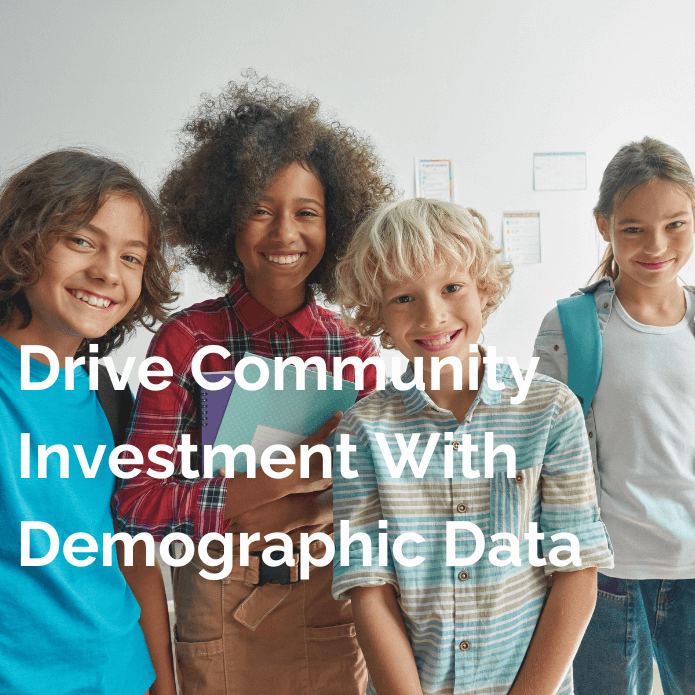Demographic data helps you ensure your investment is helping those most in need
Is your funding helping agencies in your community serve more people or more of the right people?
Improving the lives of more community members is a worthy goal. Likewise, improving the lives of the community members most in need of help is paramount to true change.
You know this! You also know it can be tough to accomplish and even to simply track and measure.
Collecting demographic data for those being served and, perhaps, for those providing services, can help you be confident your investment is supporting more of the right people. So, where do you start?
Determine which data will show if you are meeting your mission.
Your mission is your guidepost for everything you do, including how you invest in programs and services in your community. Before you jump into the demographic data deep end, answer these questions for a good foundation:
• What services and initiatives would meet our mission most effectively?
• Who needs these services most in our community?
• What data do we need to know that services and initiatives are not only reaching them but doing so effectively?
Develop your demographic data action plan.
With your high-level, mission-aligned data needs in hand, it’s time to dig into the demographic data collection details.
• Determine who you’d like demographic data for. Is it simply for community members receiving services, or is it also important that service providers share staff and board demographic data?
• Identify the specific categories that will help you know the right people are being helped such as age, income level, race, ethnicity, location, etc.
• Within those categories, what groups will exist? For example, do you simply need to know how many children, youth, adults, and seniors have been served? Or do you need a more specific age breakdown, such as 0-2 years, 3-5 years, etc.?
• Check in with the agencies providing services in your community to learn if and how they are collecting demographic information. What are the categories and groups they are using? If they aren’t already, would they be able to collect this information? Are there opportunities for alignment or a need for technical assistance?
• Determine if you’d like to collect this information as part of your application process, reporting process, or both.
Put your plan into practice.
Now that you know what you need to ask for to have clear insight into who is being served, it’s time to get all that critical data into your hands.
• Collect demographic data in a manner that will ensure category and group consistency across applications and reports.
• Allow for entry under “unknown” and “other” groups for each demographic category to avoid inaccurate results.
• Enforce balanced totals across demographic categories to ensure data integrity.
• When collecting demographic data on a recurring basis, such as quarterly or semi-annually, pre-populate previously submitted data for a simplified experience for grantees and reliable data for your organization.
Use demographic data to make a difference.
After all the hard work you and your grantees put into getting this data, it’s time to get something out of it!
• Get the overall picture of who is being served through your investment by aggregating the data across all grantees.
• Spot opportunities to fill gaps in services for community members who need them most.
• Analyze each grantee’s demographic data for bright spots, opportunities, and anomalies to follow up on.
• Work with grantees and community partners to address service disparities illuminated through your demographic data collection.
• Assess whether your funding is helping a diverse group of community members or if more effort is needed to make accessing services more inclusive.
With these steps in place, you’ve got actionable, mission-aligned data to inform your programs, grantee support, and, of course, community investments.
We’d love to chat with you to discover if e-CImpact or i-CResults (or both!) are the right tools to help you achieve your demographic tracking and measurement goals. Reach out to sales@seabrooks.com today to schedule a time to discuss your demographic data collection options.
